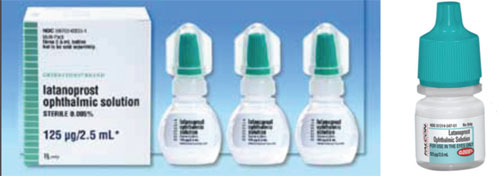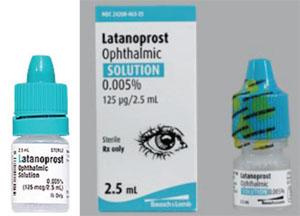Here, I’d like to talk about some of the ways in which generics may differ from the branded medications they replace, and what clinicians need to be on the lookout for.
The Issue of Bioequivalence
The hurdles required to get a new, “innovator” drug to market are substantially different from those for a generic follow-on drug. Of course, that’s part of the reason a branded medication costs more. Where the initial innovator drug has to prove safety and efficacy through clinical trials, a generic is only required to show bioequivalence.
Although bioequivalence sounds like it might involve conducting biological studies, the FDA defines it as meaning that you must demonstrate that the ingredients of your generic version are an exact copy of the ingredients in the original drug, including both active ingredients and excipients. (If the active ingredients and excipients are not identical, the drug is not considered a generic; it has to go through regular FDA approval just like any new drug.) The premise is that this will cause the generic to have the same safety and efficacy as the branded drug.
Unfortunately, the idea that generics are equal to branded medications because the ingredients are the same is not necessarily true. Many factors that affect the efficacy of a topical medication are independent of the ingredients inside the bottle. For example:
• Bottle material matters. The ingredients of many branded medications are matched to the bottle material that’s being used. This was certainly the case with latanoprost, where compatibility with the bottle material was a large part of the research and development process when bringing Xalatan to market. This is not something that’s directly investigated by the FDA.
• Bottle shape and size affects use. Innovator drug trials not only test the drug but also the bottle in which it will be delivered to patients, so the impact of the bottle’s shape and size has been taken into consideration. However, generic drug manufacturers are not required to copy bottle shape and size, and this can make a difference in how easily patients can use the drug.
|
• Cap color doesn’t always match. Ophthalmic drug bottle cap colors are intended to be coordinated based on the drug category. The FDA tries to ensure that the color is correct, but there have been cases in which a different-color cap slipped through. As a result, sometimes the generic drug bottle cap color (as well as shape and size) is different from the branded drug (See example, above). This creates a lot of confusion when patients are trying to remember which of several drops they’re supposed to take at which time.
Even if a patient has never used the branded drug with the correct cap color, an altered color is still a problem; the new cap color might actually be the same color as another medication the patient is taking. For example, prostaglandin analog bottles are supposed to have teal-colored caps. If your patient is using a generic version whose bottle has a white cap, she might confuse it with other classes of medication that are supposed to have a white cap.
If you notice an example of incorrect cap color, the FDA has said it would like to hear about it so steps can be taken to correct the discrepancy.
• The drop size may be different. Topical drop bottles on the market right now provide a dose of 30 to 50 µl per drop. Unfortunately, there can be a lot of variability between branded and generic formulations simply because the tip might have a bigger or smaller hole. Obviously, this can affect how much of the drug is actually making it onto the eye; it might be less, it might be more.
|
All of these considerations—bottle material, shape and size, cap color and diameter of the drop opening—are very important for both the physician and the patient. Unfortunately, these considerations may be overlooked, because the focus is on trying to prove bioequivalence.
• A patient’s generic drug may look different from month to month. This is another unfortunate side effect of generic medications. It happens because there can be multiple manufacturers of a given generic, each with a different bottle. For example, there are six to eight different manufacturers of generic latanoprost in the U.S. market right now. The one that a given pharmacy sells may change, because a chain such as CVS, Walgreens or Walmart will usually go with whichever manufacturer is giving the pharmacy group the best deal at a given time. As a result, a pharmacy might switch the generic it offers when a lower bid comes in from another generic manufacturer. So even if the patient is going to the same pharmacy, he may end up with different generic versions of a drug at different times. That can be confusing if the bottles look and/or behave differently. (There might even be a difference in tolerance and IOP control between the two.)
The Package Insert
Ironically, even if a generic drug turns out to have a problem, current rules prevent the manufacturers from alerting physicians or patients. There’s a rule that requires generic drug manufacturers to include an exact copy of the package insert that’s included with the innovator drug. While this rule was intended to reflect the idea that the drugs are bioequivalent, the unintended side effect has been to avoid placing the same diligence requirements and burden of ensuring safety on the generic manufacturers that we require from branded manufacturers.
As a result, if the generic manufacturer introduces a medication onto the market and notices some side effects or adverse events that occur with the generic product, it’s not allowed to change the package insert to alert physicians and patients that there may be a problem. In addition, this rule may actually reduce the motivation of generic manufacturers to conduct adequate monitoring of their products; after all, there’s no threat of a lawsuit if a problem arises.
Fortunately, this issue has come to the attention of the FDA. In November 2013, the FDA proposed a rule that would permit generic drug manufacturers to update their labels if they receive information about potential safety concerns. If passed, this will go a long way toward ensuring safety for our patients.
Imported Generics
Another issue with generics is that many of them are manufactured outside of the United States, where quality control has sometimes been a real concern. Problems have ranged from mysterious impurities being found in the drugs, to imperfect ingredient matching, to outright fraudulent formulations that serve no beneficial purpose at all (which may in some cases result in grievous harm to patients).
|
Our group did a study a couple of years ago comparing latanoprost manufactured in India to Xalatan. We found that the stability of the active ingredients was not the same over time or when subjected to heat. Furthermore, we found contaminants in all of the imported bottles, including microscopic filaments resembling string, and what we dubbed “UFOs.”
The point is that the oversight of manufacturing practices that happen overseas in non-United States-based companies, especially companies that don’t have branded medications on the market, is just not the same.
Some physicians may assume that such imported drugs are only an issue when patients purchase drugs outside the United States via the Internet in order to save money, but the reality is that these imports are increasingly available here. Indian formulations of timolol and travoprost are currently available through U.S.-based distributors, and other drugs such as NSAIDs will be available soon. Obviously, many companies outside the United States are producing high-quality generics; the concern is that a few of them are not. That puts the burden on physicians and patients to make sure that a given generic is safe and effective. (At least the drugs that are available inside the United States have gone through the FDA bioequivalence process; the drugs that some patients purchase outside the country via the Internet may not have, making them even more suspect.)
Inclinic Strategies
Because of all of the variables we’ve been discussing, physicians should stay closely attuned to what’s happening with patients when they switch from a branded to a generic, or switch from one generic to another. We have to be vigilant to be sure intraocular pressure control isn’t wavering and that patients are not presenting with new signs and symptoms of intolerance to the medication.
Here are a few things you can do to protect your patients (and your practice):
• Ask patients to bring in their drops. I ask my patients to do this regardless of which medications they are using, and many of them do. That gives me the opportunity to record which generic manufacturer they’re using and do my best to keep tabs on that, so that if a problem occurs or something changes, I can look for a possible connection.
• Have patients switching to a new generic return to the clinic sooner than you would otherwise have them return. This will allow you to make sure no untoward consequences are occurring. Stay alert for changes in efficacy or new signs or symptoms.
• If you see any issues arising when a patient switches to a generic, alert the FDA. Remember that this situation puts the burden on the physician to make sure the generic drug is truly safe and effective.
• If a patient doesn’t do as well with a generic, make the effort to get the insurer to cover the branded drug. I’ve been faced with patients who were tolerant of the branded medication but had difficulty tolerating a generic because of side effects such as redness or irritation. In those cases, we write to the insurance company and do everything we can to get the patient switched back to the branded formulation.
For example, a branded medication may have a specific preservative in it, while the generic formulation has an alternative preservative that the patient is sensitive to. Travatan Z is a branded medication made by Alcon that contains the preservative SofZia instead of benzalkonium chloride; the generic versions contain BAK because their bioequivalence was based on the older version of travoprost. If a pharmacy switches a patient who is allergic to BAK to the generic drug, it becomes an issue.
Unfortunately, seeing thousands of patients a year at our practice, it’s really hard to make sure that we win the battle for every patient who ends up in this situation. However, we do make the effort.
The Burden Is on Us
Generics are here to stay, and they’re becoming a major part of treatment for all diseases, not just in ophthalmology. They’re typically safe and effective, and they can produce cost savings for both patients and the health care system in general. Make no mistake—I’m a big fan of cost-cutting. If we can find a safe way to cut costs while maintaining excellent care, I’m all for it. It’s the second part of that equation that we have to keep an eye on.
I use generic medications myself every day, and the overwhelming majority of my patients are on generics now. They’re almost all doing very well, with good IOP control and good tolerance to the medications. So I’m certainly not saying we should avoid using generics. However, the reality is that generics are not necessarily the same as the branded medications—even if they’ve satisfied the FDA’s bioequivalence requirement. That means that when using generic drugs, the burden of ensuring safety and efficacy is on us and our patients. REVIEW
Dr. Kahook is The Slater Family Endowed Chair in Ophthalmology and vice chair of clinical and translational research at the University of Colorado School of Medicine in Denver. He is a consultant for and receives research support from Allergan and Alcon.





